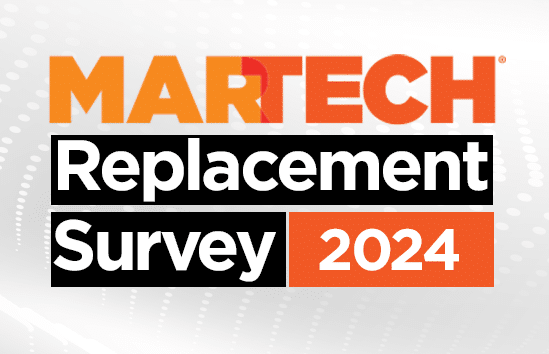This week, CRM and BPM software company Pega announced new generative AI capabilities, including enhancements to its new product, Blueprint, and to its AI assistant or copilot Knowledge Buddy. Before understanding what value these products might deliver for marketing or the CX organization in general, it’s worth taking a closer look at what they are and how they work.
We sat down with Pega CTO Don Schuerman to better understand solutions that are actually easily misunderstood.
Blueprint: GenAI for enterprise workflows
Pega thinks of Blueprint as “the future of app design.” The first thing to understand is that “app” is meant here in a very Pega-like way. We are not talking about TikTok or Temu. “When we think about apps at Pega,” Schuerman said, “we tend to think of workflows. We’re starting always with the workflow, not the front-end screen experience.”
Since Blueprint is a genAI tool for developing plans for apps, it must be trained on something. “In its current state, Blueprint draws from three places. One is some templates that we’ve injected into it. Pega has a lot of experience, for example, doing retail loan origination for banks. We’ve put that into the library so Blueprint has access to it. Our partners that we work with tend to have IP in certain parts of the business, so they have started giving us their templates; they stay private to the partners.” Think EY, Infosys, Accenture.
“The third thing Blueprint has is the knowledge embedded in the large language model.” In this case, OpenAI on Azure. “When you put in a description of a workflow, it will first pull from our template, but that may not be complete; then it pulls from the large language model. It synthesizes all those areas of information.”
What comes next is allowing customer documentation to be pulled in. “Now Blueprint uses that as its starting point and fills in with some of its broader knowledge and maybe some of Pega’s templates.” That’s for the second half of the year.
The output from Blueprint is not an app but a plan or blueprint for an app. How does the app get built? “Blueprint lays out the app in the exact same structure that we would use in Pega to build the app. That can then be directly imported into the Pega platform and then it is literally a running app.” It may require tweaking from developers but essentially they are working on something that is already there and running.
The Pega step isn’t essential. A Blueprint can be printed out as a PDF and handed to a developer to build on some other platform. “It’s 7.8 times faster at least to build it in Pega,” Schuerman commented.
One merit of this approach to workflow creation is that it potentially avoids weeks of planning meetings. But surely stakeholders still get to review the Blueprint, comment on it and suggest changes? “The thing that Blueprint avoids,” said Schuerman, “is the blank-sheet-of-paper problem. You put a whole bunch of people in a room and ask them to look at a blank sheet of paper, you create endless debate and go down a whole bunch of rabbit holes. If you give people something to react to, you’re now having much more tangible conversations. What do you change, what do you add?”
Dig deeper: Pega’s Blueprint for digital transformation
Buddy up for brand understanding
“Think of Knowledge Buddy as a packaged retrieval augmented generation solution (RAG) for enterprise content.” What does that actually mean in practice? “We allow an organization to point Knowledge Buddy at their content repositories,” Schuerman explained. “We’ve built the underlying infrastructure to pull that content into a vector database and use that to do the dynamic prompting that results in the answers.”
Clients can point it at HR content and use it as an HR Buddy; they can point it at customer service manuals and create a Customer Service Buddy. “Depending on the knowledge you feed into, that’s the kind of Buddy you get.”
One possible obstacle to creating a Buddy is surely that many organizations have vast amounts of documentation, some misplace, some out-of-date. Isn’t it a huge lift to get it into condition to be ingested by Knowledge Buddy?
“What we’re seeing is that enterprises tend to already have content repositories.” An insurance company, for example, will already have somewhere it stores its claims documentation. “The current method of going through it is like traditional search. Find the document, open it, figure out where in the document the answer is. Digesting that into Knowledge Buddy provides an exponentially experience for their users,” Schuerman said.
Knowledge Buddy is capable of responding to a question with “I don’t know,” which is actually useful because it highlights a gap in the documentation it has ingested. There’s also an opportunity to begin “aging out” content that Buddy never needs to refer to. “It doesn’t 100% solve the problem that enterprise content is messy, but I don’t have to invest manual effort in solving that.”
How do these solutions support marketing?
The solutions just described clearly have relevance across the enterprise, from finance to HR to operations. It’s not hard to imagine how they could be used by marketing teams. But to get a more substantive understanding of how they could be leveraged by marketing, sales and customer service, we turned to Tara DeZao, Pega’s product marketing director for adtech and martech.
“It’s about orchestrating a journey,” she said, “mapping out a customer journey. Customer journeys are no longer a straight line; more like octopus tentacles. Being able to visualize what your map is going to be is very helpful for marketers.”
Thinking through a Blueprint lens, DeZao would consider which channels she wants to activate on, how many products are in the mix and the tone of the journey. “You come away with a strong view. For example, I just mapped a journey for our low interest rate credit card and that’s just one of 10 journeys I need to map out today. It’s about optimizing the process of running hundreds of programs across many channels. Being able to see them visually is extremely helpful.”
In fact, on the Pega main stage the audience had already seen a light-hearted example of a journey mapped by Blueprint. The two main stage hosts were standing in front of a blown-up Blueprint laying out the stages of their journey from introducing the keynote to signing off. A campaign Blueprint would be much more complex, but this made it easy to envision.
“I’ve used the tool myself,” said DeZao, “and its interesting to see all the things you forget, like I skipped this really important step in the process.”
What about Knowledge Buddy? “You think about how it could work internally for your marketing organization in terms of being able to self-serve. Where can I find a logo without reaching out the the creative director? All the way up to how an audience segment is performing, running an A/B test; it just cuts out the multiple step processes most of us have to go through when we are running our marketing programs.”
There’s another benefit to CX teams that are often viewed as cost-centers, DeZao said. “We talk about revenue and selling things a lot, but we don’t talk about the money you save on the backend when processes are optimized and when the workforce can focus on pushing the ball down the field.”
If genAI is table stakes, how does Pega compete?
Of course, in recent months we’ve seen Adobe and Salesforce working on AI assistants and copilots. It’s clear that such tools are going to become table stakes for the large CX platforms, and probably for many of the smaller ones too. Knowledge Buddy looks a lot like the competition, although Blueprint is something different and much less familiar. How does Pega differentiate itself in this environment as it previously did with its statistical AI-based real-time decisioning?
“I think Knowledge Buddy is well-designed and solves a lot of enterprise problems,” Schuerman said. “I am not under the illusion that it’s the only RAG-based product that’s going to be sold. Everybody’s got one. For example, you have to have [AI-powered] summarization; people expect it. But I don’t think someone is going to buy Pega because we have AI summarization. Nor do I think our clients will have a competitive advantage because we have summarization. Where they will have a competitive advantage is because they’ve used the statistical AI to build their own models, using their own data to differentiate the customer experience.”
The core goals of driving decisioning to create next-best-actions and of driving workflows will continue to differentiate Pega, Schuerman concluded.
Email:
See terms.
The post What Pega GenAI tools might mean for marketers appeared first on MarTech.

